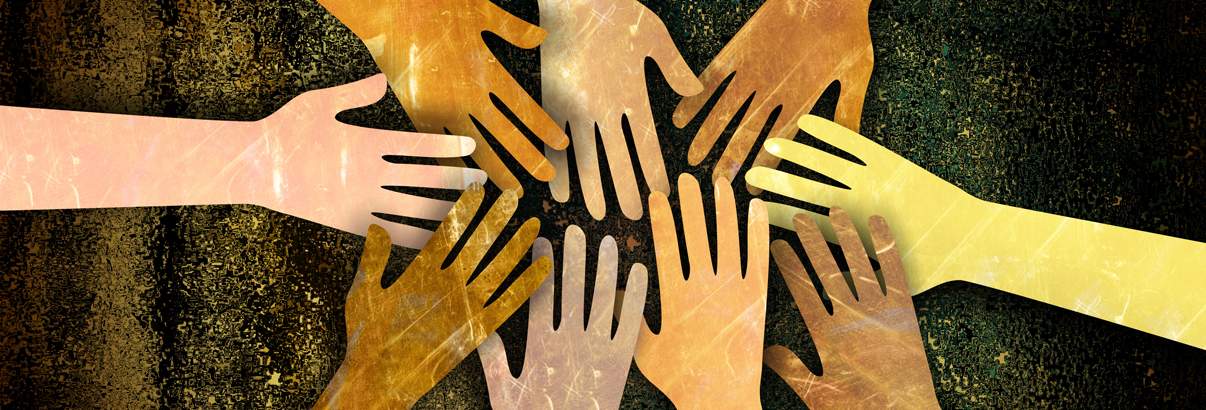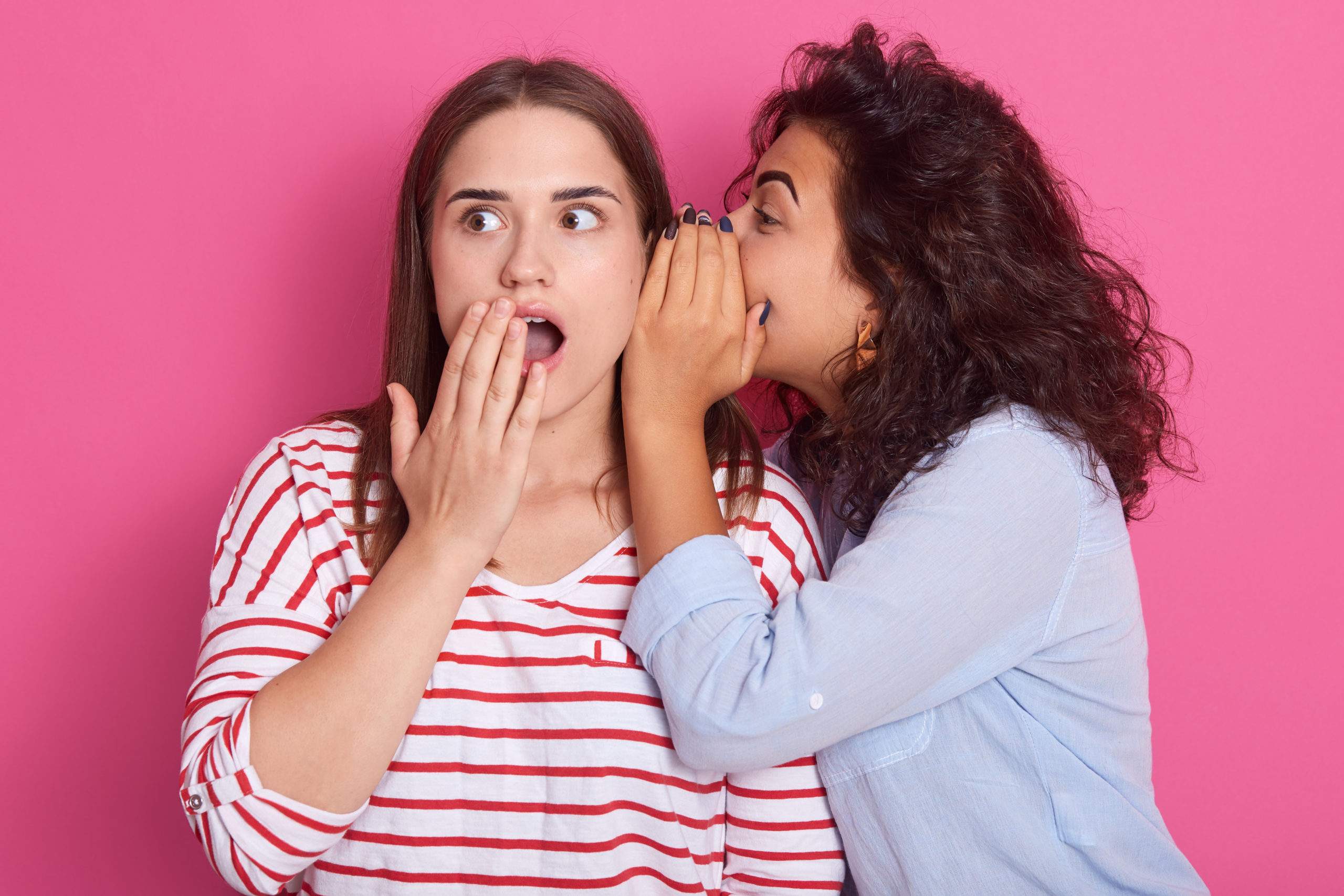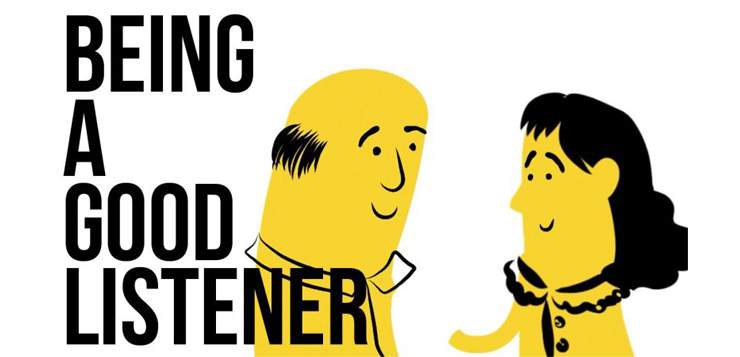In 2016, in the wake of racially charged bloodshed in Baton Rouge, Minneapolis, and Dallas, the city of Cleveland hosted the Republican National Convention.
There Iowa Rep. Steve King argued that only whites had made contributions to civilization, while other “sub-groups” did not. Asked to clarify his remarks, King—who keeps a Confederate flag on his desk—did not back down. “The Western civilization and the American civilization are a superior culture,” he said, deliberately associating “Western” and “American” with white. No leader at the convention publicly disavowed King’s assertion.
This is just one example of the polarizing public language that meets the dictionary definition of “racist”—“having or showing the belief that a particular race is superior to another.” King’s argument is an example of explicit, conscious prejudice, when someone outwardly expresses, through words or behavior, a view denigrating a particular group.
But what explains the fact that police departments are more likely to use force against black suspects than white ones, at a time when so many departments are consciously trying to reduce these discrepancies? What could explain why companies explicitly committed to diversity show racial bias in hiring decisions? Why would caring teachers be more likely to punish black students more harshly than white students?
In these cases, and many others, scientific evidence suggests that we’re seeing the effects not of explicit prejudice but of implicit bias—the unconscious, often knee-jerk prejudices that subtly guide our behavior.
Scientific evidence suggests that we’re seeing the effects not of explicit prejudice but of implicit bias—the unconscious, often knee-jerk prejudices that subtly guide our behavior.
The distinction between explicit and implicit bias is important because it changes how we address prejudice in every corner of society, from police departments to schools to homes. If the problem is with racists—individuals like Steve King—then the solution is to identify them and limit their influence. That does need to happen; indeed, after Chief David Brown took over the Dallas police department in 2010, he fired over 70 officers from his force—and excessive-force complaints dropped by 64 percent.
But the new science of implicit bias suggests that the problem is not only with bad apples. Instead, prejudice is a conflict that plays out within each and every one of us.
We’ve seen more and more research into the automatic and measurable associations that people have about others and the subtle and unconscious behaviors that these associations influence. In many daily circumstances, automatic associations are natural and harmless. Not so when a police officer pulls a car over for a broken tail light, and the negative associations he has with the face of the driver can produce deadly results; or when a black defendant’s facial features can make a jury more likely to give him the death penalty.
Last summer, theGreater Good Science Center published a series of articles by researchers and law enforcement officials about how to reduce the negative influences of implicit bias in the criminal justice system. But this research isn’t just for cops and judges—it can help all of us to understand how our brains work and why we are not as different as we might like to think from a police officer who shoots an unarmed suspect.
Indeed, the fact that implicit bias occurs outside of our awareness but affects explicit behaviors—from whether we pull a trigger to how we judge a resume to how we discipline young children—can deeply threaten our self-image. If I have implicit bias, does that mean I’m not really committed to fairness and equality? Am I, at a deep and unconscious level, actually a racist?
The answer is both yes and no. We all carry prejudices within ourselves—and we all have the tools to keep them in check.
When we think of “racists,” our minds conjure up people like the San Francisco police officers who were caught using racially derogatory words in text messages, or perhaps politicians like King. Their pronouncements shock many of us with their old-fashioned racism, in which people’s out-group attitudes are conscious, explicit, and openly endorsed. This type of racism was characteristic of majority group members’ attitudes up until around the 1950s—and today it does indeed appear to be undergoing a vocal revival in public life.
What discussions about implicit bias recognize, however, is that a great deal of contemporary racism comes from people who say they don’t want to be racist.
Evidence of this tendency emerged when negative attitudes or stereotypes became publicly frowned upon in the 1960s and 70s, and many people felt social pressure to not get “caught” saying something that sounded racist—an extrinsic motivation that many have labeled “political correctness.”
This formulation implies that egalitarian behavior is not real or truly felt, but rather, a social grace to mask an unacceptable attitude. As many supporters have said about Donald Trump, he “says what nearly everybody thinks, but is too fearful or polite to say.” This conception makes someone like Trump sound “honest,” but by implication, suggests that those who speak up for egalitarianism are being somehow “dishonest.”
Things become even more complicated when a person (or institution) sincerely values egalitarianism yet engages in some kind of behavior that nonetheless betrays bias. Many studies find evidence of anti-black bias in pain-killer prescription and other kinds of medical treatment. One study found that job applicants with stereotypically African-American names were less likely to be invited to be interviewed. And, despite the avowed commitment of the courts to “justice for all,” the connection between criminal sentencing and race is well documented.
For many people, the very possibility that they too might get caught saying one thing but doing another is extremely threatening and aversive. That threat, in fact, has a name: aversive racism. It refers to the type of racism in which a person’s implicit biases are so out of line with their conscious values that social situations where they experience this conflict—such as interracial interactions—are something to fear and avoid.
In a 2008 study, for example, white participants who were about to discuss racial profiling with a fellow study participant who was black literally sat further away from them, and this distance was not predicted by their level of racial bias. Instead, it was predicted by their fear of being perceived as racist. In these kinds of situations, we create a self-fulfilling cycle of negative racial interactions—and to avoid them we may avoid contact with different kinds of people altogether.
This dynamic, ironically, can deepen racial segregation and inequality.
Did we evolve to be racist?
These behavioral findings have counterparts in neuroscience.
We often hear descriptions of the brain’s limbic system as our “reptilian brain” that responds to environmental cues with the same level of sophistication as an alligator. Lightning quick and outside of our control, the limbic system has been called the seat of our fight-or-flight responses, perfectly adapted to the eat-or-be eaten environment of our early ancestors. A central player in this prehistoric narrative is the amygdala, a pair of almond-like structures that form part of the limbic system. Early findings that the amygdala responds strongly to fear conditioning led to the view that the amygdala is the structure that sets in motion the fight-or-flight response.
Researchers like Elizabeth Phelps and Mahzarin Banaji wrote a significant chapter in our understanding of implicit bias when they found that faces of different races trigger different amygdala activation in the brain, and that there’s a relationship between levels of implicit bias and amygdala activity. These findings have fueled a conception of implicit bias as not only unconscious and automatic, but also as biologically determined—part of our ancestral heritage. The implication there is that our only hope is to contain it, but never realistically to overcome it.
Newer research—often by the same people—is beginning to challenge the core assumptions of this narrative. Once again, the amygdala plays a central role. Scientists are beginning to recognize that the amygdala, rather than responding exclusively to negative or fear-inducing stimuli, instead seems to be exquisitely sensitive to emotionally important information in the environment. This is a subtle but important difference, and suggests that depending on the task or the situation at hand, the amygdala may be able to respond differentially.
In one study, researchers found that the amygdalae of participants activated at levels consistent with how negatively they rated a set of faces, in line with prior findings. However, amygdala activity was also related to their judgments of the positivity of faces. And when they judged faces using a scale that was anchored by both positive and negative endpoints, the amygdala tracked the overall intensity of the responses. In other words, the amygdala is more than just a “fear” center, and its activation doesn’t necessarily indicate prejudice.
The amygdala is more than just a “fear” center, and its activation doesn’t necessarily indicate prejudice.
In another study, researchers had participants engage in a face-sorting task in one of two different conditions—either by race, or by membership in teams that included people of different races. Interestingly, the amygdala did not only track race information—it tracked the socially relevant membership (team or race) depending on the social task in front of participants. This tells us that the amygdala is not necessarily pre-wired to detect race information, but rather, to track and respond to the category or social grouping that is most relevant at a given time.
Rather than contradicting an evolutionary narrative, however, these findings merely challenges us to think a little more broadly about the usefulness of categorization even in early times—we may have had to quickly recognize a member of an “out-group” on the basis of race, but it would have been just as helpful to quickly track whether an individual of the same race as us was part of a nearby enemy tribe. When we consider that “in-group” versus “out-group” distinctions don’t neatly fall along racial categories, we can begin to consider that race is not a biological inevitability, but a social construction with social significance that our amygdala tracks.
When we consider that “in-group” versus “out-group” distinctions don’t neatly fall along racial categories, we can begin to consider that race is not a biological inevitability, but a social construction with social significance that our amygdala tracks.
In other words, if the brain adjusts to quickly process information that is deemed as socially relevant, it may be within our power to redefine what is socially relevant. And, rather than needing to squash or cover up our base biases, perpetually caught in a Freudian tug-of-war between Id and Superego, the current view opens the possibility of redefining our social environment so that it doesn’t need to track race as a socially significant marker.
Six ways to stop the racist in you
What are the implications of this new way of thinking and conceptualizing brain function for our understanding of prejudice—and of how can we use it to limit our own biases?
At its most basic level, this new understanding of the brain reveals it not as a layered organ showing the layers of our evolution, as might layers of sediment in a canyon. Rather than thinking in terms of dualistic structures—primitive/evolved, emotion/thought, limbic system/neocortex—we are coming to understand that the brain is much more interconnected than previously thought.
But beyond this understanding, these new findings show that our automatic processes (including our implicit biases) are not unchangeable, and that we can learn new behaviors that can become second nature.
An everyday example shows how this is possible. Consider that not one of us is born learning how to drive, and yet by the time many people are adults, we find ourselves not even thinking about it even as we expertly maneuver the car. One day, with practice, egalitarianism might be like driving a car: a skill learned over time but eventually so automatic as to be second nature.
So what are the tricks that you can use to stop the racist in you? There are many, of course, but here are six to consider that follow from the scientific insights we describe.
- Consciously commit yourself to egalitarianism.
- But recognize that unconscious bias is no more “the real you” than your conscious values. You are both the unconscious and the conscious.
- Acknowledge differences, rather than pretend that you are ignoring them.
- Seek out friendship with people from different groups, in order to increase your brain’s familiarity with different people and expand your point of view.
- It’s natural to focus on how people are different from you, but try to consciously identify what qualities and goals you might have in common.
- When you encounter examples of unambiguous bias, speak out against them. Why? Because that helps create and reinforce a standard for yourself and the people around you, in addition to providing some help to those who are the targets of explicit and implicit prejudice.
Those are steps you can take without waiting for the world to change.
But this research has implications that go well beyond the personal. The split-second reaction of a police officer who shoots an unarmed black man might not be very different from your own. Instead of asking the question of whether a person is or is not racist—because we’re all a mix—we can turn to thinking of the ways in which we might engineer our social environment to address racism and its worst effects, without believing that any one step will be a blanket fix.
Knowing that bias is part of the structure of our minds we can ask, for example, how can we change policing so that the results of bias are less deadly? How can we address economic inequality between different groups so as to reduce the stress on communities that are historically the targets of racism? What can school districts do to make sure teachers come in daily positive contact with different kinds of people, and receive training in techniques to help them consciously reduce unconscious bias?
There are many fronts in the campaign against bias, both implicit and explicit, but they all have one thing in common: us. We are all potentially part of the problem—and we can all become a part of the solution.





